South America is home to one of the longest rivers in the world, many unique species of animals, and a massive rainforest. Among the distinctive animals that roam the open grasslands of the continent is one that is mired in confusion and mystery: the maned wolf. Everything from its name to its looks is confounding. That’s why we’ve decided to show you 10 incredible maned wolf facts and help you see what makes these animals so interesting.
Without further ado, let’s get into the list and start things off with a little bit of a twist.

10. The Maned Wolf Is Not a Wolf at All
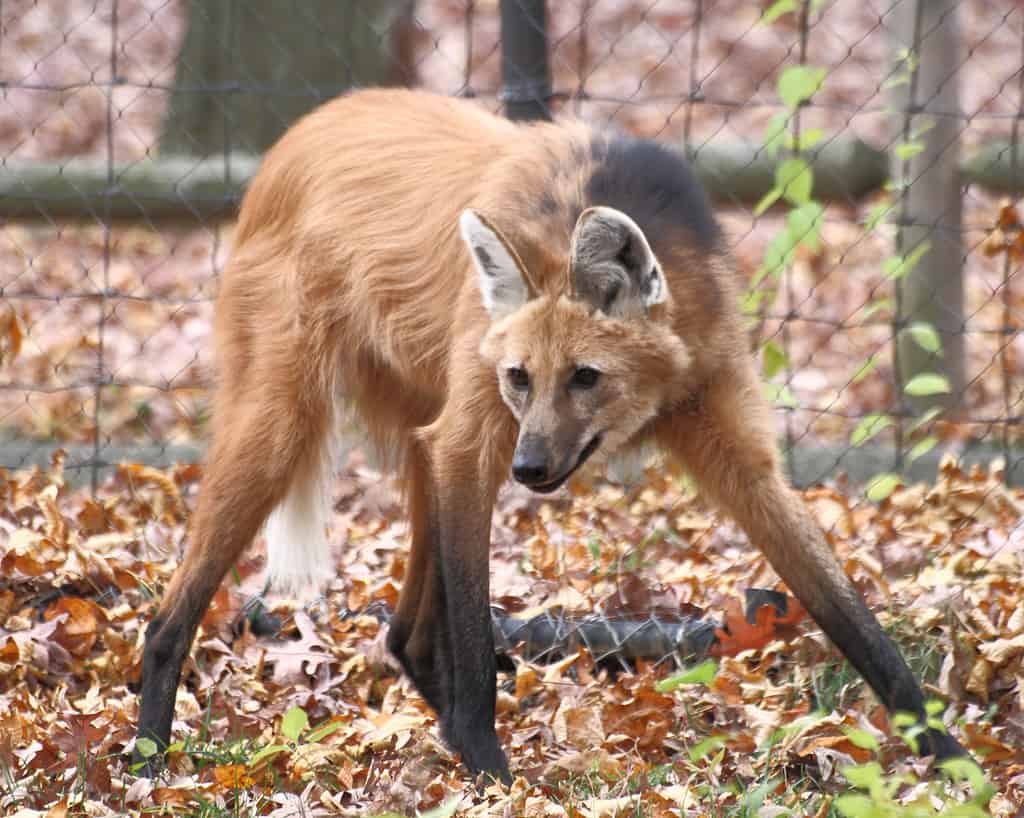
The maned wolf is in a different class of its own.
©Sage Ross, CC BY-SA 3.0, via Wikimedia Commons – License
Although its name is clear as day, the maned wolf is not a wolf. It’s also not a dog or a jackal. These creatures don’t fit well into any of those categories, so they fit into their own instead. This creature’s scientific name is Chrysocyon brachyurus, and it’s all alone in that genus.
The maned wolf is part of the same subtribe that contains some foxes and other canids, but it’s not related to them.
9. Males Help Care for Their Young
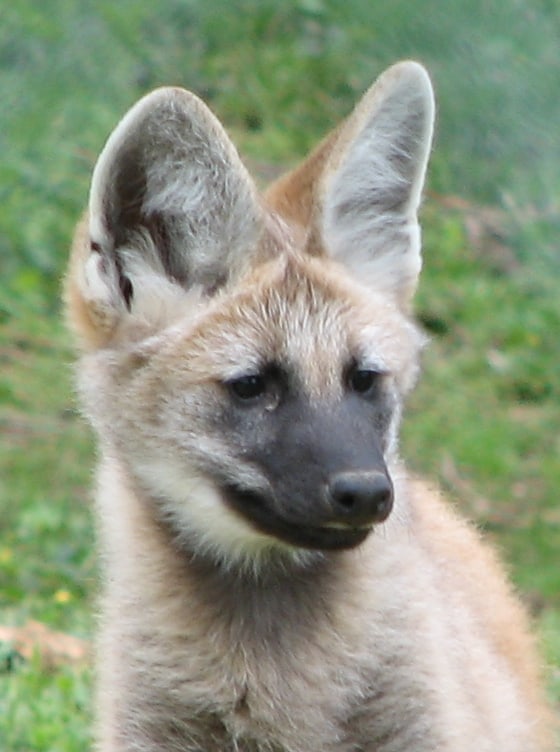
Males regurgitate food for their young in captivity, but we don’t know if they do it as often in the wild.
©Ltshears – Trisha M Shears, Public domain – License
In many species, the primary child-rearing is performed by the females. However, males are involved in the lives of their young, at least in captivity. Males help by regurgitating food for their young to consume. That leads to another gross fact: maned wolves eat vomit.
Although we know that males regurgitate food for their young in captivity, we don’t know if they do it as often in the wild. In fact, that regurgitating behavior has only recently been successfully recorded in the wild.
8. They Are Lone “Wolves”
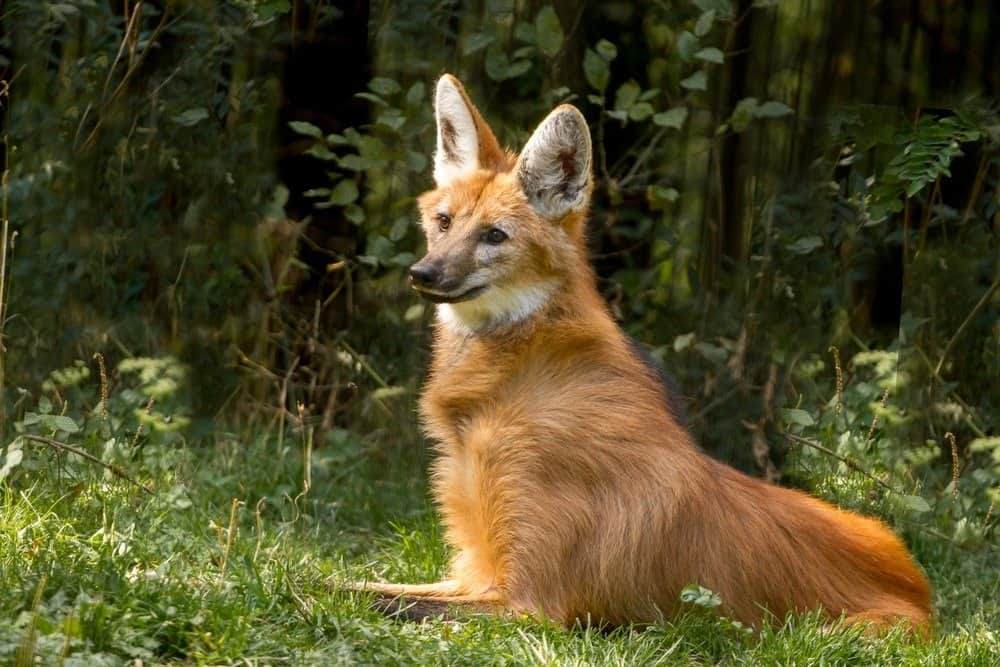
Most maned wolves keep to themselves outside of breeding times.
©Marie Dirgova/Shutterstock.com
Many groups of canid animals prefer the company of others for safety. Wolves, jackals, and wild dogs seek to create communities to help them survive. Don’t expect to see many maned wolves together in the wild, though.
Sometimes, they are observed with members of the opposite sex. Still, that doesn’t mean these canids like to spend a lot of time around others. It’s speculated that the animals congregate for breeding purposes and the raising of young. Outside of that, they are loners.
7. Maned Wolves Have a Diverse Diet

©João Medeiros, CC BY 2.0, via Wikimedia Commons – License
With “wolf” in their name, you might assume that the maned wolf likes to eat a ton of meat. While they certainly indulge in hunting and eating small mammals and birds, they also consume a fair amount of fruit.
They eat hundreds of different foods, and one of the most popular is called wolf apples. These tomato-like fruits make up about half of their diet or more. Scientists believe that the reason maned wolves eat these fruits so often is their abundance and availability throughout the year.
6. They Mark Their Territory with Especially Smelly Urine
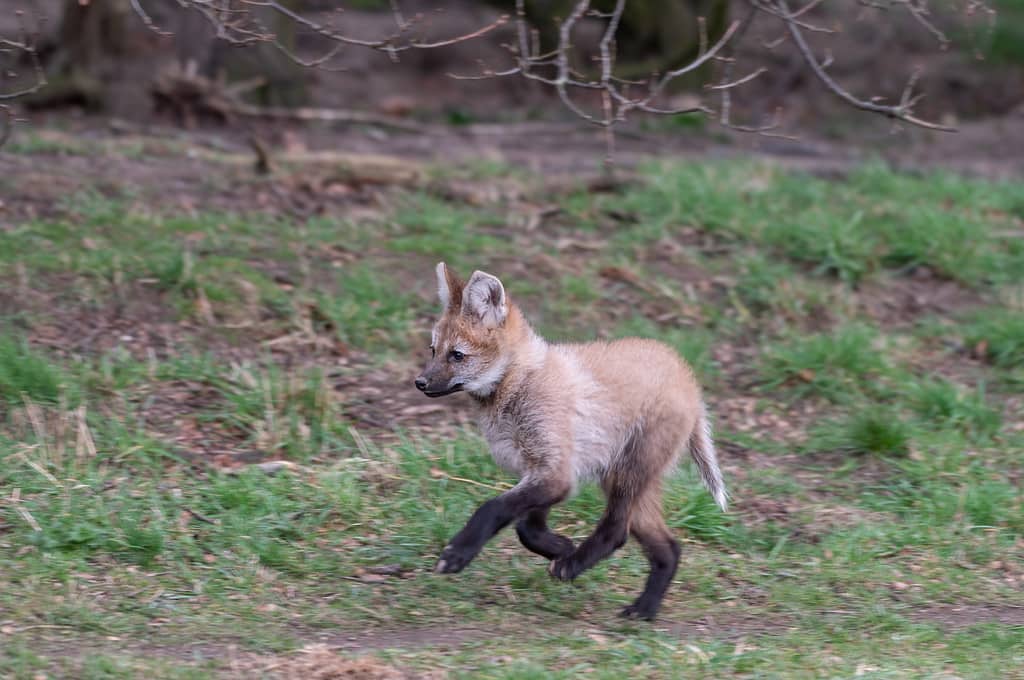
The interesting thing is that certain chemicals in their urine may signal information to other maned wolves.
©Ian Fox/ via Getty Images
If you were hoping for another gross fact about maned wolves, you’re in luck. Like many other male creatures, they mark their territory with urine. It’s not your run-of-the-mill stuff, though. Maned wolves are famous for having some of the most pungent, putrid-smelling urine that rivals the scent that skunks produce.
If you wander into their territory after a fresh spray, you’ll know it. The interesting thing is that certain chemicals in their urine may signal information to other maned wolves, perhaps a desire to breed, but we don’t know what just yet.
5. They Perform a Roar-Bark to Tell Others to Back Off
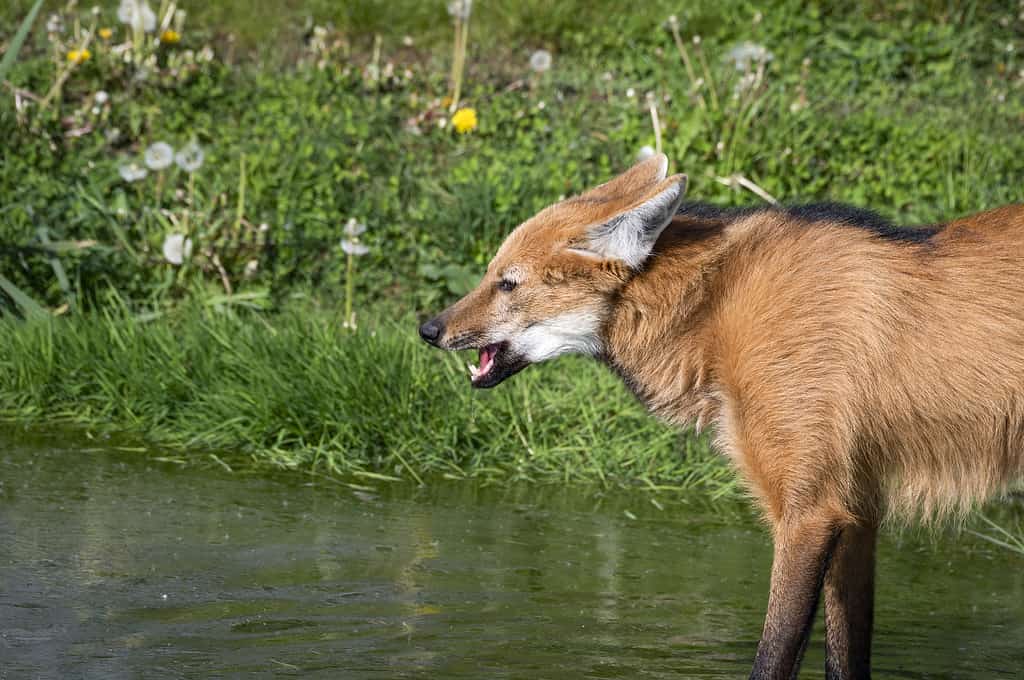
They eat hundreds of different foods, and one of the most popular is called wolf apples.
©Ian Fox/ via Getty Images
Maned wolves make weird sounds compared to other canids. Sure, they have a growl, and a whine like you would hear in dogs. Yet, they also have a “roar-bark” that they use to tell other creatures to go away. These are very loud, elongated barks that are very distinct.
Interestingly, these calls are somewhat specific to a particular maned wolf, so the listener can tell the difference between two maned wolves that are calling. The maned wolf is not known to howl, though.
4. Maned Wolves Are the Tallest Canids in South America
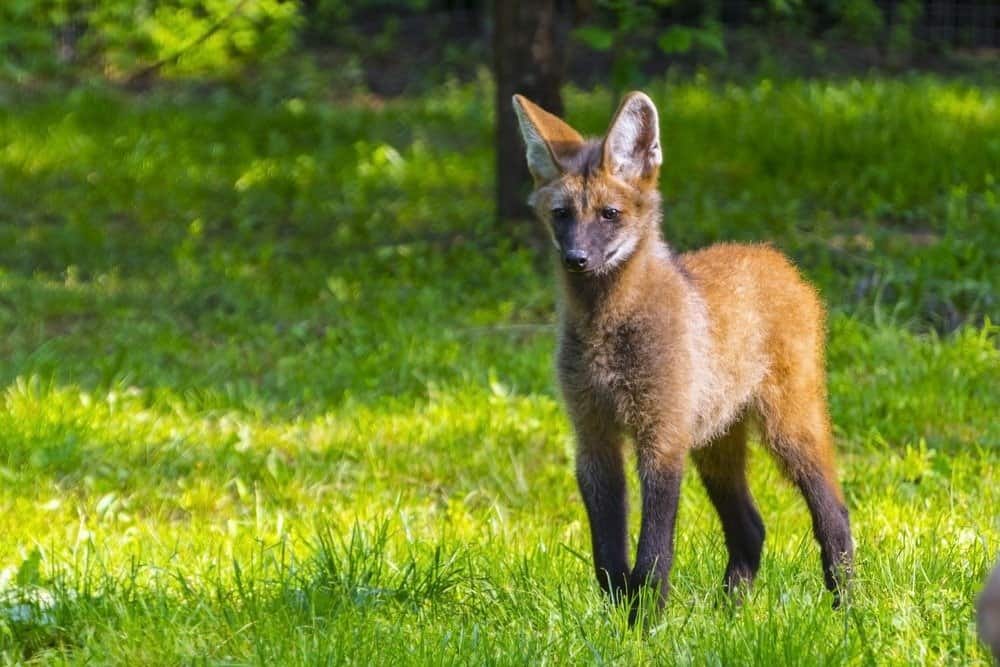
These animals are often said to resemble foxes on stilts.
©belizar/Shutterstock.com
Maned wolves are actually quite large creatures, and a lot of their height comes from their long legs. On average, they will stand 35 inches at the withers. They stand on long, thin legs that make them look like a fox on stilts to some people. These long legs serve a purpose, though.
Their height helps them see over tall vegetation in their range, most of which are savannahs and grasslands but also include marshes and forests, too. Also, their long legs help them reach a top speed that exceeds 40 miles per hour. These are swift animals!
3. They Are Hunted by Larger Mammals
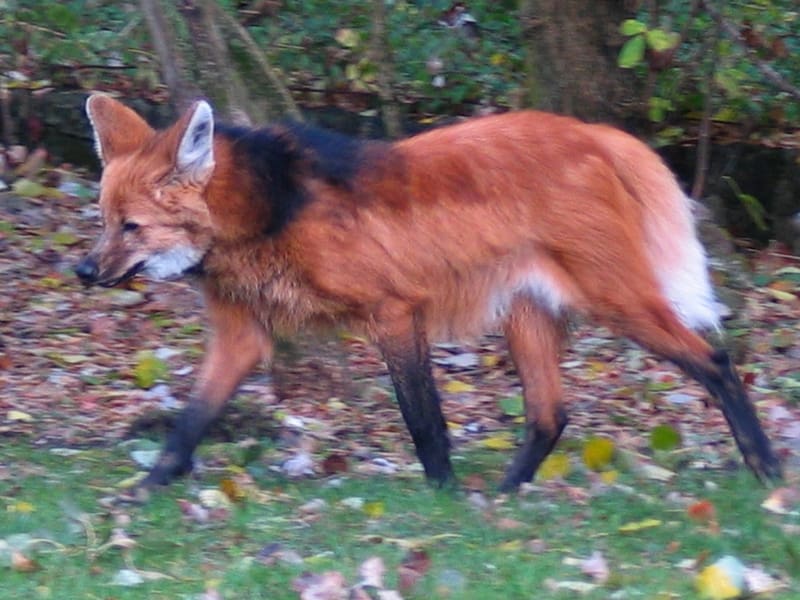
Two of the main predators of the maned wolf that exist today are jaguars and pumas.
©User: Taragui (Dixi) / CC BY-SA 3.0, from Wikimedia Commons, the free media repository – License
Although South America is not known for having a great deal of large, dangerous mammals, a few of them prey on the maned wolf. Two of the main predators that exist today are jaguars and pumas.
These large cats have a size and weight advantage in many cases, and they also can stealthily approach the maned wolf. All told, these factors spell disaster for the unlucky canid, as it has practically no chance of winning a fight against a jaguar or puma.
2. Scientists Learn a Lot from This Animal’s Scat
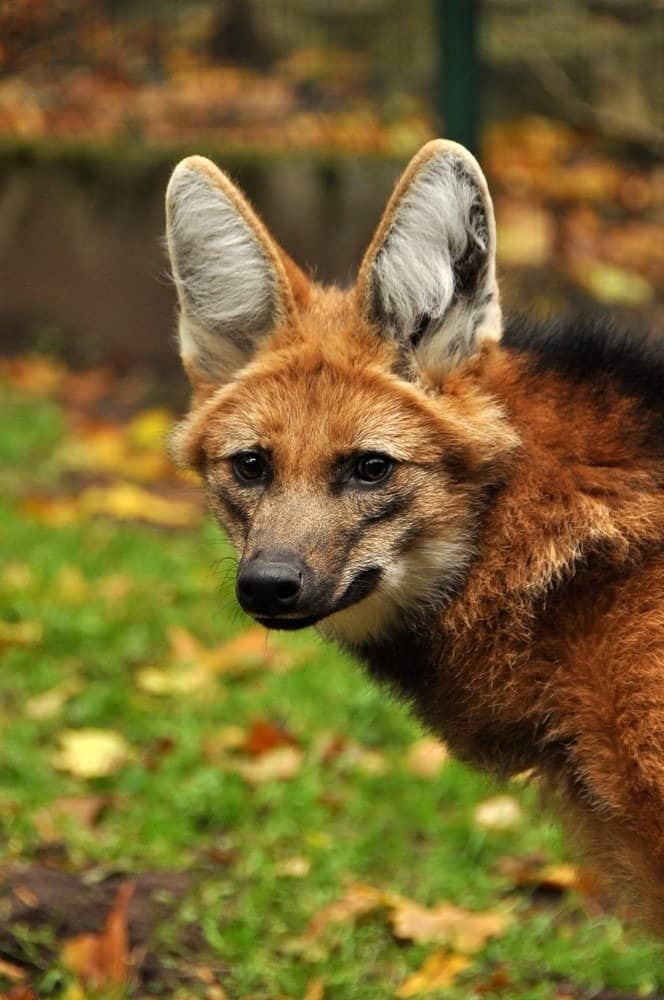
Maned wolves are very elusive animals, and their numbers are few.
©Zanna Pesnina/Shutterstock.com
Scientists have trouble finding maned wolves to study in the wild. These are very elusive animals, and their numbers are few. So, they have to study the maned wolf’s poop because it is so hard to see what they’re up to in the wild.
Fortunately, that has told scientists quite a bit about these creatures, including what they eat during which seasons. It may be nasty, but this is certainly one of the 10 incredible maned wolf facts that have helped humans understand these animals the most.
1. Fewer than 25,000 Exist in the Wild

Maned wolves have a small wild population that needs protection.
©Vladimir Wrangel/Shutterstock.com
Part of what makes studying this animal so difficult is the fact that there are relatively few of them left in the world. Although it is hard to get an exact count, most organizations believe that fewer than 25,000 of these animals exist in the wild.
Fortunately, their native countries are stepping up to the plate to issue protections for them. They are protecting the maned wolf’s natural range and reducing the interactions between them and humans. After all, habitat loss is one of the driving forces behind this animal’s population loss.
We hope that these 10 incredible maned wolf facts have been enlightening and entertaining. These unique creatures are interesting to learn about because humans don’t have an abundance of information about them.
Still, captive breeding programs at zoos are giving us greater insight into these canids, and it’s possible to see them up close at some facilities.
The photo featured at the top of this post is © Vladimir Wrangel/Shutterstock.com
Thank you for reading! Have some feedback for us? Contact the AZ Animals editorial team.






